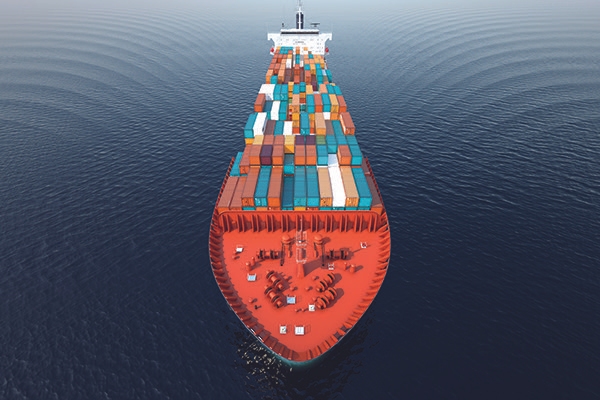Will There Be A Low Sulphur Fuel Oil Crisis In 2020?
For many, memories of the horrific financial crash of 2008 are still raw. However, 2018 forecasts indicate that immediate drastic action is required to avoid such a calamity reoccurring in 2020. If it does, according to the commentator, Philip Verleger last year, “economic losses could be much greater than any experienced in the prior five decades”. Experts have labelled this impending catastrophe as the Low Sulphur (Sulfur) Fuel Oil Crisis.
On January 1, 2020, the International Maritime Organization (IMO) will enforce new regulations that state that ocean-going vessels must reduce their sulphur emissions to 0.5%. The problem is, the oil and shipping industries aren’t ready for it and the IMO isn’t budging.
Diesel pollution has been an on-going problem and, in 2008, the IMO warned shipping companies there would be a forced transition away from high sulphur fuel oil (HSFO) to a more environmentally friendly fuel in 2020. (Fuel with 0.5% sulphur is called low sulphur fuel oil (LSFO); emissions are currently regulated at 3.5%.). Unfortunately, few took them seriously. Even when this was ratified in 2016, again, few took heed. Alas for the marine industry, the IMO is serious and a three-fold problem exists:
- Not enough refineries can produce LSFO.
- Not enough ships have been converted to use the LSFO that is currently available.
- The IMO has specified that ALL vessels that don’t comply with mandated regulations risk being labelled non‑seaworthy and/or having their insurance cancelled.
Exhaust gas scrubbers are almost certainly the smartest move to sidestep the potential low sulphur fuel oil crisis. But shipowners need to act. And soon.
According to economist Philip Verleger, unless drastic steps are taken immediately, the resultant regulations could force a low sulphur fuel oil crisis that could trigger a subsequent global economic crash.
In the event prices top $200/barrel, “very high prices and recession await”
Verleger was an advisor to two US presidents and, in 2007, correctly predicted that rising oil prices could trigger a financial crisis. Verleger’s assumption is also based on the unlikely chance of there being no market disruptions. If there are, prices could rise even higher. In the event prices top $200 per barrel, “very high prices and recession await”.
With such little time left, government policymakers must review and force action to prevent this imminent and potentially catastrophic crisis. It’s clear that the oil and shipping industries haven’t done enough, but what can they, and shipowners, in particular, do to meet the new LSFO limits?
How Can Shipowners Meet the New Sulphur Limits on Marine Fuel?
There are three ways that ship owners can meet the new sulphur regulations: convert to LNG, convert to low-sulphur MDOs or blends (LSFOs), or install an exhaust gas cleaning system (EGCS).
- Converting to LNG is the most expensive and involves installing new systems, training, etc.
- Converting to low-sulphur MDOs or blends is, on the surface at least, the quickest and least capital-expensive of the three. Unfortunately, it isn’t that simple.
- Installing an EGCS (or scrubber) is much cheaper than converting to LNG, but it’s not been adopted in sufficient quantities. Both the IMO and EnSys Energy have indicated that there has been a “lower than previously expected uptake of exhaust gas cleaning systems”. Fitting, or retro-fitting, an exhaust gas scrubber makes the most sense for most shipowners. However, time is running out.

What Are The Key Issues of The Sulphur Fuel Crisis?
Let’s be clear, the impending fuel crisis is NOT about crude inventories. It’s as a result of the IMO 2020 mandate forcing the burden from the shipping industry onto the oil refineries. The ships don’t produce LSDF, it’s the refineries. Two key issues of this mandate are:
- Verleger estimates that refineries will need to increase capacity by around two million barrels per day. The problem is they neither have the capacity, the means, nor the time to meet this volume increase.
- Refineries will also need to find new markets for the now surplus two million barrels of high-sulphur fuel. Failure to do so will force closures, lead to dramatic increases in fuel prices, and be disastrous for the economy.
Regardless of who’s to blame here, only the IMO has the power to prevent what comes next – only the IMO can stop this. The question is, does it have the will?
How Can Shipowners Avoid Becoming A Victim of The Potential Crisis?
In 2018, when asked about deferring the date, IMO’s secretary-general, Kitack Lim, said, “At this point, the regulation which brings into force the 0.5% limit in sulphur in fuel oil from January 1, 2020 cannot be changed from a legal perspective, so there is no possibility of delay.”
That’s all well and good, of course, but what are the alternatives? Surely emergency measures, maybe deferment, and continuing pollution for a few short years (and no-one is suggesting long-term continuation here) is preferable than the hardships of a global economic meltdown?
In the meantime, if shipowners want to navigate the choppy waters of IMO 2020, their window to take action is narrowing all the time. Exhaust gas scrubbers are almost certainly the smartest move to sidestep the potential low sulphur fuel oil crisis. But shipowners need to act. And soon.
Would you like to discuss more?
Our global team of advisors with years of combined experience in the marine sector are on hand to discuss your project.